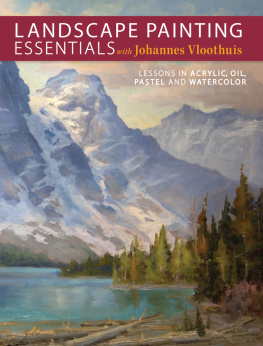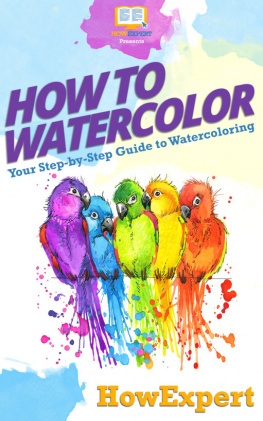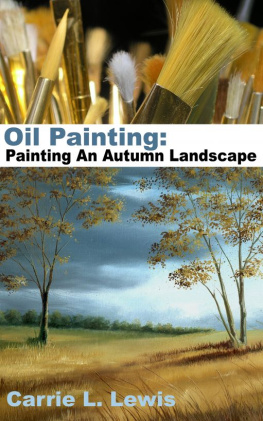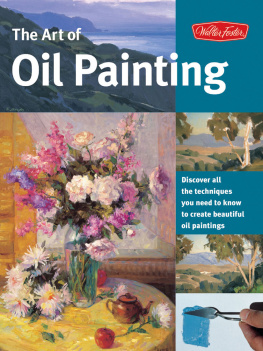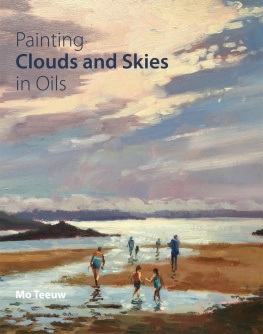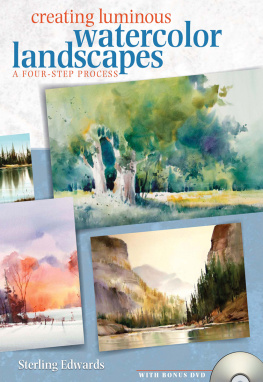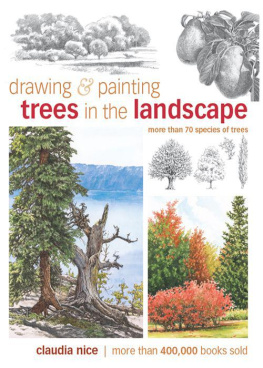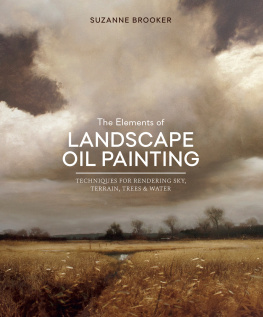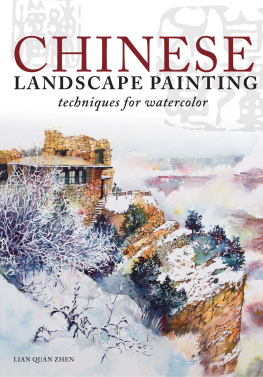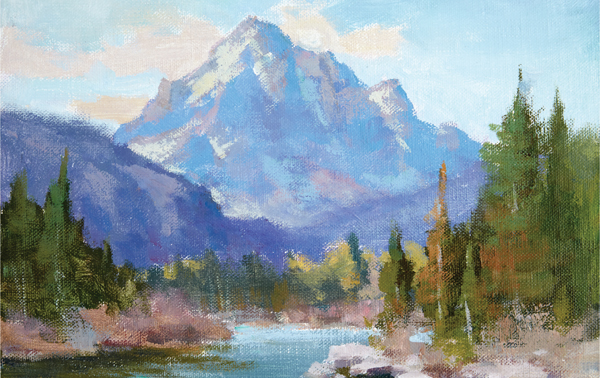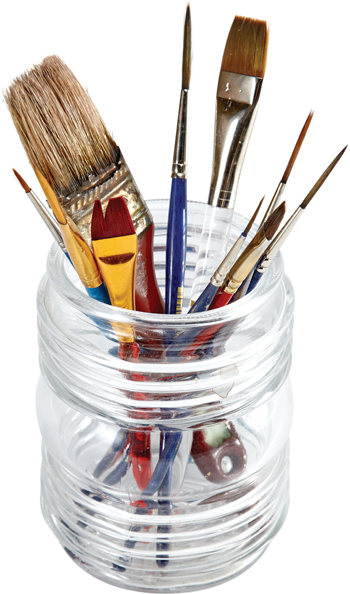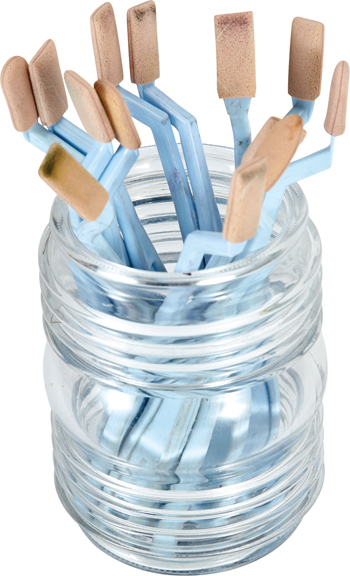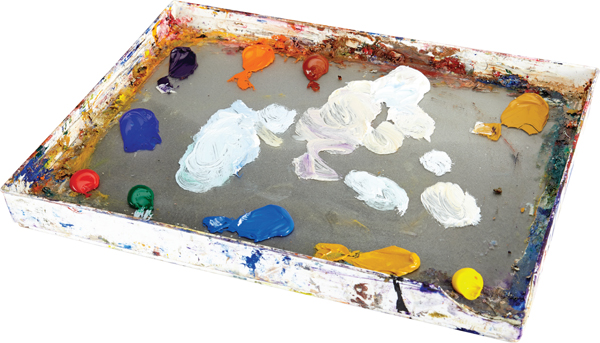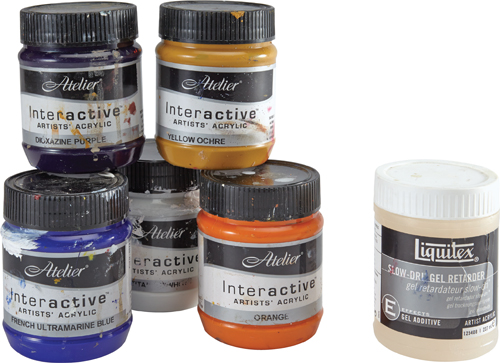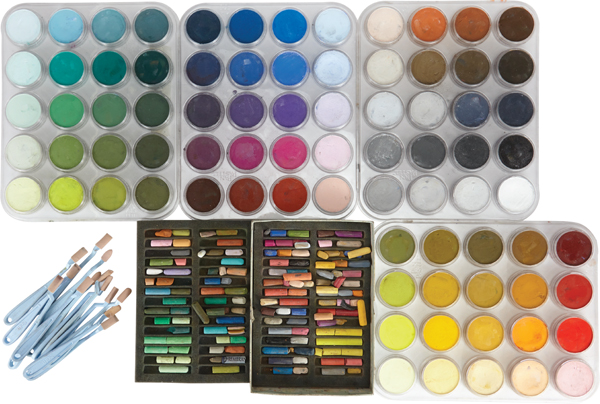Thank you for purchasing this Artist Network eBook.
Sign up for our newsletter and receive special offers, access to free content, and information on the latest new releases and must-have art resources! Plus, receive a coupon code to use on your first purchase from NorthLightShop.com for signing up.
or visit us online to sign up at
http://artistsnetwork.com/ebook-promo
Contents
Chapter 1
Chapter 2
Chapter 3
Chapter 4
Chapter 5
Chapter 6
Chapter 7
To my wife, Patty, who always supported me in my painting ventures and to my sons, Johannathan, Christopher and especially Kenny, who is also an artist and contributed some of his knowledge to this book.
Introduction
I fell in love with landscape painting when I was in my thirties. I was thrilled with the idea that I could create my own worlds. As happens with all artists, my early attempts were to copy photographs exactly. I erroneously thought that if I could copy nature from a good photo, I would end up with a successful painting. I chose the most outstanding scenes, set my studio up and started to paint but it just was not working. I said to myself, This doesnt look right. I dont like what I am painting.
For years, I battled to get the answers to what it took to paint successful landscapes. I went to several instructors, got a few tips here and there, but nothing that could really make a big enough impact in my artwork. I remember promising myself, If I ever get good at this, I will share everything so others wont have to go through the same frustration.
After reading countless books and carefully observing top artists work, I started to see patterns that they all repeated in their artwork. So I back engineered their paintings and figured out the commonality in their compositions. This is when I began to apply a science to my process, and my paintings started to click. I won the top award in a nationwide contest in Mexico and began to sell many paintings.
A few years later, I joined WetCanvas, an art focused social network where people share their paintings and tips. I remembered my promise and offered help and advice to other artists seeking answers. Eventually, I was recognized by the publishers of this book, who named me a Master Painter. They approached me to teach live online classes and workshops that would reach out to even more artists.
Since then, I have taught over 15,000 artists, including professionals. These classes enabled me to verbalize in simple understandable terms the science of beauty in landscape painting, and much of it is now being revealed in this book. I part with this notion, I dont believe in ugly paintings because it is a human expression, but I do believe one should pursue venues to make them more beautiful.
The Teton
Open acrylics on linen glued to masonite board, 8" 10" (20cm 25cm)
Materials
There are entire books devoted to the topic of how to choose the best supplies and tools for creating your artwork. Here is a brief overview of the materials I prefer to use when creating my paintings. Experiment with different brands and mediums to find the products that work best for you.
Easels
I use a Soltek easel. This is the diamond of all easels. Set up is fast and easy. There are no wing nuts to turn. It is all metal and light weight compared to many other easels. I have done over 500 plein air paintings with it.
Brushes
I prefer brights for all my mediums. The square heads help me design abstract shapes. Rigger brushes work well for thin lines. I use a pastry brush for grass in watercolor.
Sponge Tools
These PanPastel washable applicators are made with a special sponge to apply the paint in a thin film.
Palettes
This homemade palette has a glass panel with a mid-value gray sheet under it. The surface makes scraping off unwanted paint a breeze.
Oil Paints
I prefer Winsor and Newton Artists Oil Paints. They cooperate very well without the need of a medium.
Acrylic Paints
Atelier acrylics are buttery and feel like oil paints.
Pastels
PanPastel is a marvelous pastel medium that is applied like paint. It feels like a cross between oils and watercolors, with the advantage that you can erase unwanted areas. You can also add stick pastels to it.
Watercolors
Winsor and Newton Artists Watercolors are much better to work with than the lesser-quality pigments.
Chapter 1
Paint How the Eye Sees
Crowfoot Glacier, banff
Oil on linen, 24" 20" (61cm 51cm)
One of the most common phrases art instructors use is, Paint what you see! This needs some clarification however, because many artists assume this means to copy what they see literally, rather than designing their paintings to be compatible with how the eye anatomically sees. This applies to both plein air and painting from reference photos. Once you understand the way the human eye perceives reality, you will be able to tailor your paintings to look the way the scene would appear as the information is processed in the brain.

